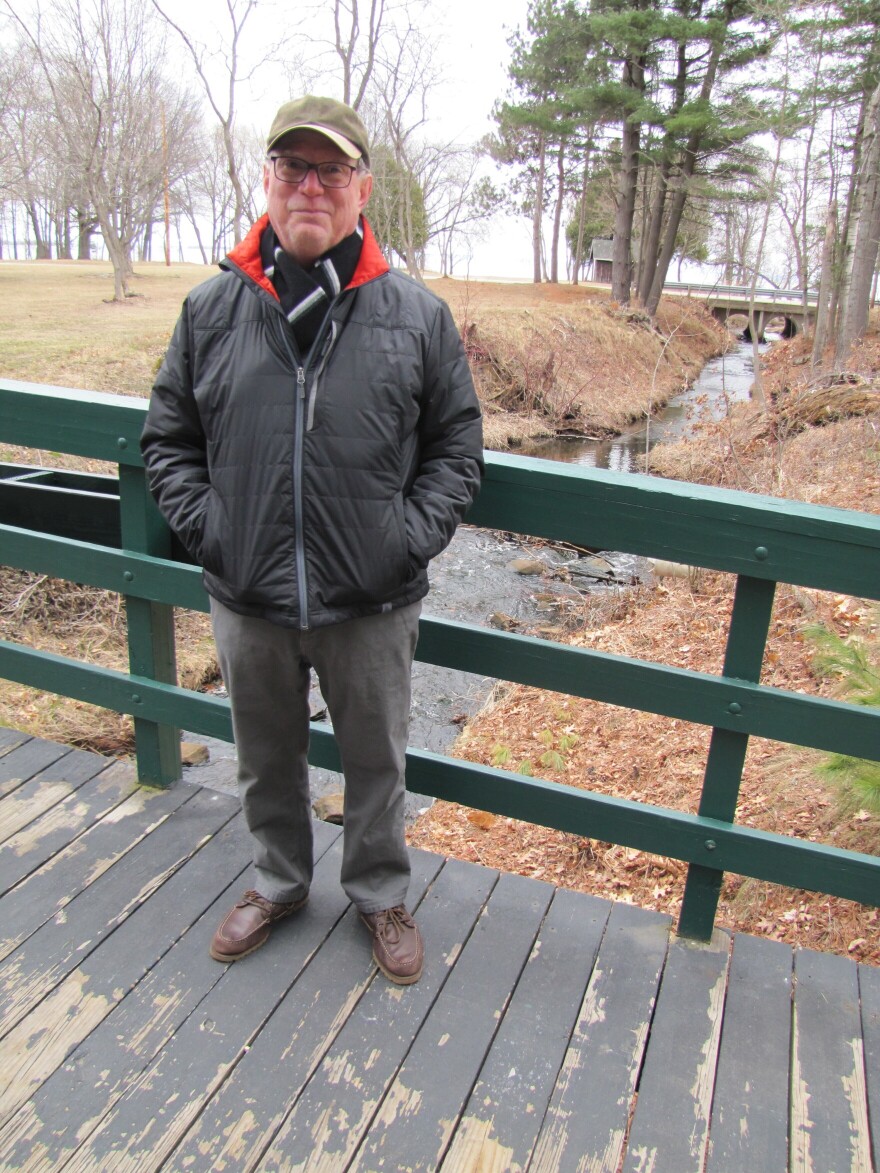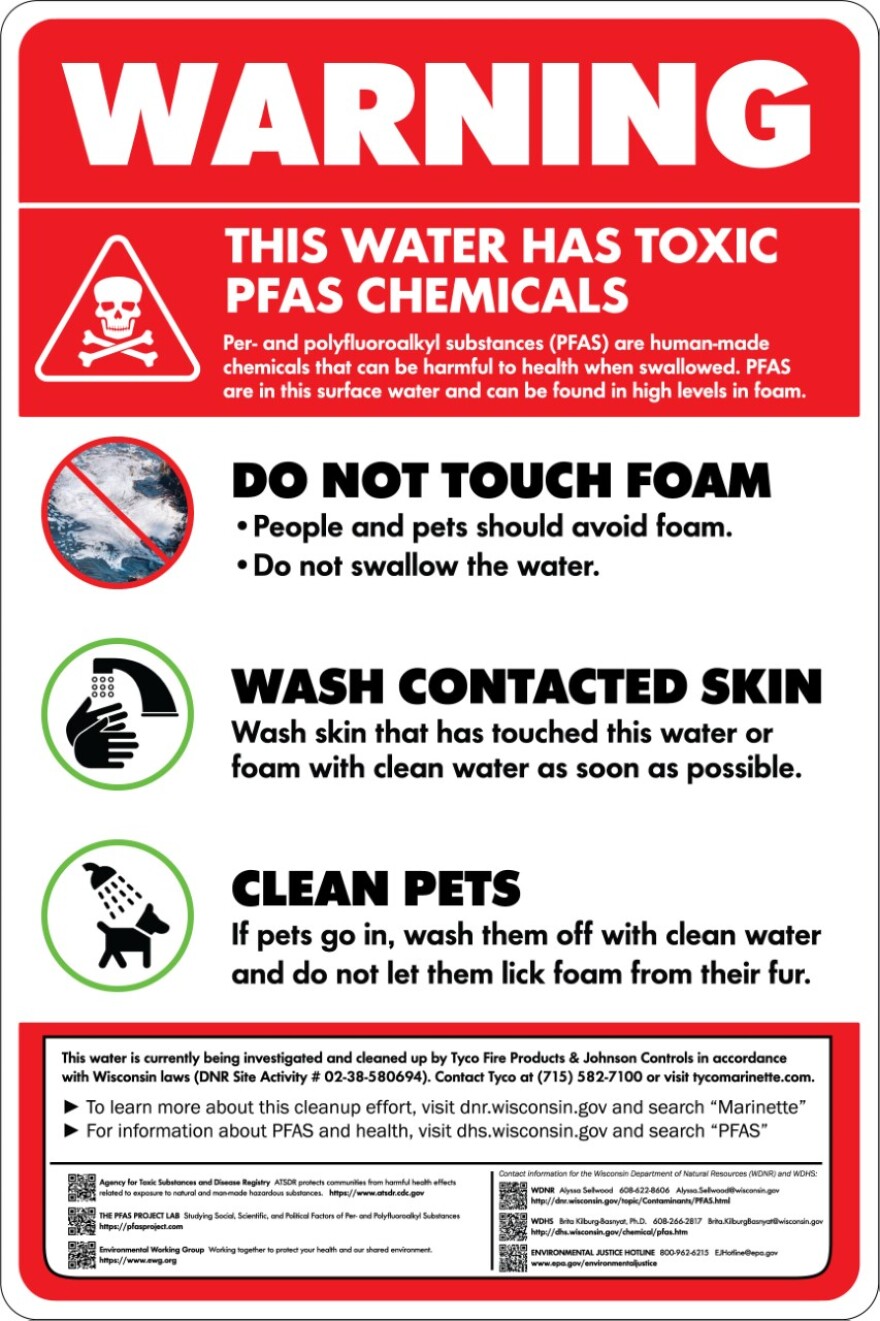Wisconsin is grappling with contamination caused by PFAS, the so-called forever chemicals. The artificial product has been uncorroborated into many products, from firefighting foam to non-stick cookware and fast food packaging.
As of Dec. 29, the Department of Natural Resources reported 92 contamination sites.
The year 2021 brought steps toward regulating two of the estimated 9,000-plus PFAS.
In the meantime, communities dealing with contamination don’t know when they will have a safe, sustainable drinking water source.
The Town of Peshtigo and neighboring Marinette’s struggle first shed light on the complexity and severity of PFAS contamination in the state.

Last spring, Jeff Lamont showed WUWM's Susan Bence the stream he played in as a child decades ago. It’s just off the shore of Green Bay in the Town of Peshtigo.
“We would spear northern pike in this creek right here. This is one of the creeks that had over 3,000 parts per trillion of PFAS going directly out into the bay,” Lamont said.
>> PFAS Contamination Pose A Continued Threat To Water In Northeast Wisconsin
Lamont and his neighbors' first clue that the manufactured chemical was impacting the groundwater beneath their feet came when letters arrived from Tyco, now owned by Johnson Controls.
It acknowledged PFAS had migrated from its firefighting training facility upstream and asked permission to test Lamont's and neighboring private wells.
“My neighbors and I are in the center of the plume,” Lamont said.
That was in 2017.
Lamont and neighbors mobilized. They reached out to state and U.S. legislators to push for regulation. But, promising attempts ran into roadblocks from the Republican-dominated state legislature.
"We drafted the Clear Act and the foam bill, the firefighting foam. And one of the provisions we were key in getting put into that legislation was not disposing it down the sanitary sewer. They were flushing this down the sewer for 20, 30 years. It went into the biosolids. Those biosolids for 20 years got spread on over 3,500 acres of farmland in the county, Marinette County here," Lamont said.
>> Wisconsin Environmental & Public Health Groups Intervene In PFAS Court Case
There were, and still are, no PFAS laws at the federal or Wisconsin level.
In the Peshtigo/Marinette area, Tyco offered bottled water to all residents whose wells fall within its study area. That’s the area the company said the PFAS might have spread.
If the contamination level is higher than recommended groundwater standards, Tyco offered residents, like Jeff Lamont, a special filtration system called a POET.
Lamont said he also uses bottled water because the filtration system doesn't remove all the PFAS. His family has been cooking and drinking bottled water for almost four years.
The DNR provides bottled water to 32 additional families whose wells have tested high for PFAS but are located outside the area, of which Tyco is taking responsibility.
With no permanent, safe drinking water solution in sight, the DNR hired a facilitator to sit down with key stakeholders.
Two meetings, not open to the public or media, took place last month. When asked if the discussion will continue in 2022, a Town of Peshtigo official answered "foreseeably."
As for Lamont, he and some fellow Peshtigo residents are waiting for a literal sign.
In 2019 the Wisconsin DNR and Department of Health Services okayed a possible chemical exposure hazard advisory sign.
Lamont said the signs aren't big enough. The message is not urgent enough. There are too few posted along contaminated streams that feed into Green Bay.
So Lamont said a small local team has come up with its own design in hopes Tyco and state officials will approve.

What can a sign accomplish?
Recently Lamont saw a family tramping around in a stream where PFAS foam was visible.
“A young man and his two kids, they were playing down in the creek in the foam," Lamont said. "The signs are important because when you have kids who play in the creeks like I used to as a kid, you want them to be aware and have someone to call and ask questions, including somebody locally.”
Other communities grappling with PFAS including the Town of Campbell on French Island and Eau Claire are now calling on Lamont and his neighbors for advice.
"One of the first questions we ask is, okay, who is your congressman and who's your senator," Lamont said.
He admits, it’s easy to lose heart.
"I grew up on the lake, and when I was 12, 13, 14 years old, you didn't swim in the bay. And we had this long period of time where things were cleaned up, and the water was clean...you could feel comfortable swimming in it," Lamont said. "And we're just sliding right back into where we were."
But Lamont said the Peshtigo/Marinette core group and a growing number of impacted communities are determined.
He believes creating state PFAS standards are most important right now.
Have an environmental question you'd like WUWM's Susan Bence to investigate? Submit below. (If the module isn't appearing, please refresh the page.)
_







